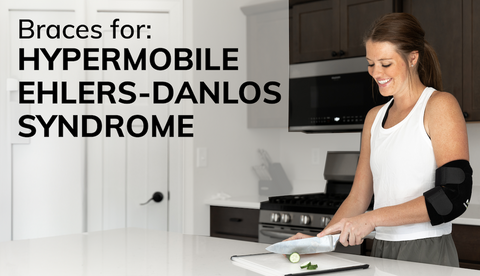7 Effective Remedies for Pregnancy Back Pain
Pregnancy can cause a great deal of stress on your back, leading to extreme pain, aching and soreness. But there’s good news- this means that your baby is growing! Although your baby will only get bigger, there are still things you can do to relieve and prevent back pain caused by pregnancy. We’ve compiled a list of 7 effective remedies for pregnancy back pain. To start off, you should know exactly what causes back pain in pregnant women. Pregnancy back pain typically occurs where the pelvis meets the spine at the sacroiliac joint. There are various factors and body changes during pregnancy that cause the stress on these joints. These changes include weight gain, posture changes, hormonal changes, muscle separation, general stress, and muscle tension.
Practice Good Posture
The weight of a pregnant belly often causes your lower back to sway as your center of gravity moves forward during pregnancy. Practicing good posture and proper alignment can decrease lower back pain and soreness. Slouching strains your spine, so practicing good posture while working, sitting, and sleeping is an extremely effective remedy to relieve back pain. Read BraceAbility’s 8 easy stretches for improving posture. The following are easy tips for improving posture:
- Keep your shoulders back and relaxed when sitting
- Make sure your buttock touches the back of the chair while sitting
- Put feet flat on the floor when sitting
- While standing, make sure head is up straight with chin in
- Keep your feet about hip distance apart when standing
- Sleep on your side on a firm mattress, never your stomach!
- Try wearing a posture corrector to keep shoulders back and aligned
Wear a Maternity Belt
Maternity belts provide optimal support to your abdomen and back as your belly grows during pregnancy. A maternity belt takes away the stress and added weight that often causes back pain and soreness. Maternity belts can also help improve your posture, which can also reduce lower back pain related to poor posture. It is important to note that you should only wear maternity belts for a few hours each day. BraceAbility offers our very own Maternity Support Belt for pregnancy. This belt is available in plus sizes, making it great for women carrying twins or with a large belly during pregnancy.
Do Prenatal Yoga

Yoga is great for improving strength and flexibility. Prenatal yoga specifically is a very effective remedy for pregnant women suffering from back pain, muscle pain, aching joints, and more caused by the extra weight bearing from pregnancy. Prenatal yoga relieves the stress on your joints, and can also help improve posture. It also works to improve emotional stress with deep breathing exercises. Prenatal yoga has been found to help women sleep better and relax their mind and muscles. All of these benefits of prenatal yoga can reduce the severity of pregnancy-related back pain.
Wear Supportive Shoes

We have bad news for you fashion enthusiasts- while pregnant, wearing high heels and flats is linked to back pain. Wearing high heels increases the curvature of your back and creates pressure that drives the weight of your pregnant belly directly into your lower spine and hip joints. On the other hand, walking in flats leaves your feet unsupported, which can cause imbalance and pain all the way up to your lower back. To get the best support and relieve this pressure, it’s suggested that pregnant women wear a low-heeled shoe that is comfortable with arch support or an orthotic insert. The slight rise of the low heel will help distribute the weight put on your legs, making you more stable while supporting your back.
Good Sleep Support

It can be very difficult for a pregnant woman to get a good night of sleep, especially during the later months of pregnancy. If women are suffering from back pain, sleeping well is even more elusive because most women tend to sleep on their side. To support your back and prevent pain, be sure to always sleep on your side using a firm mattress. You should try to avoid sleeping on your back, and you should never sleep on your stomach. You can also try sleeping on your side with a pillow between your knees to reduce strain on your pelvis and lower back.
Practice Meditation

During pregnancy, women experience a great deal of emotional and physical changes to their body each passing week. Both emotional and physical stress have been found to be linked to back pain and aching sacroiliac joints. Deep relaxation techniques such as meditation can help cope with the emotional and physical stress that many pregnant women experience. Meditation has also been found to lower your blood pressure and enhance your peace of mind.









